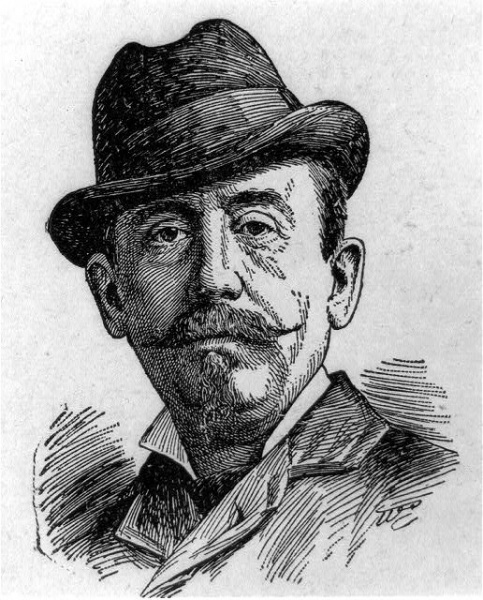
Location: 200 Common Street, Lawrence
Coordinates: 42°42’33.8″N 71°09’38.6″W
Date dedicated: November 2, 1881
Architect/contractor: David Richards, designer of “Union” statue; Thomas M. Perry, carver of “Union” statue; Maurice J. Power and National Fine Art Foundry, New York, general designer and bronze statue casting. Henry J. Ellicott, sculptor of the infantryman statue; William R. O’Donovan, sculptor of the sailor and cavalryman.
Number of names: 225 men who died in the war
 The Lawrence monument was funded through the effort of the Needham Grand Army of the Republic Post 39, named in honor of Sumner Needham, a member of the 6th Massachusetts Volunteer Militia and one of the very first casualties of the war. The 50 foot tall column is crowned by a granite statue of a female representing “Union.” The Lawrence city crest is carved into her shield along with a bee representing industry.
The Lawrence monument was funded through the effort of the Needham Grand Army of the Republic Post 39, named in honor of Sumner Needham, a member of the 6th Massachusetts Volunteer Militia and one of the very first casualties of the war. The 50 foot tall column is crowned by a granite statue of a female representing “Union.” The Lawrence city crest is carved into her shield along with a bee representing industry.

Three bronze statues on pedestals at the base of the column depict an infantryman, a sailor, and a cavalryman. This fine grouping was cast at the National Fine Art Foundry in New York, owned and managed by Maurice J. Power. His operation was responsible for numerous Revolutionary War and Civil War memorials around the country. Among the best known are the Irish Brigade Monument at Gettysburg and the New York City Soldiers and Sailors Monument in Green-Wood Cemetery, Brooklyn. In fact, the infantryman in this grouping, according to research detailed on Green-Wood’s website was first sculpted for the New York City monument in Brooklyn. In the article, the researcher proves that the infantryman figure, with his arm resting atop the muzzle of his musket in a leisurely manner, was sculpted by Henry J. Ellicott for Power’s foundry. Ellicott, A slightly refined version of the Brooklyn original by Ellicott can also be found on monuments in Springfield and Clinton, Massachusetts. Ellicott also sculpted the “Goddess of Victory” on Holyoke’s monument.

William R. O’Donovan, who sculpted the other two figures, was born in what is now West Virginia, served in the Confederate army, and moved to New York after the war. He was a prolific sculptor and created many statues for Power’s National Fine Art Foundry (including the Gettysburg Irish Brigade monument with its memorable “mourning” Irish hound). George Washington was a favorite subject of his. He also created statues of Lincoln and Grant.
Bronze tablets on the Lawrence monument record the names of 225 men from that city who died in the war. The main inscription reads, “Erected in 1881, By the People of Lawrence, In Honor of Those Who Served in the Army and Navy, 1861-1865. In Memory of Brave Men, Whose Sacrifice and Death, Preserved the Union. They died That We May Have Security and Peace.”

Corporal Sumner Needham, 33 years old, was the first of Lawrence’s casualties–and indeed among the first few Union soldiers to fall in the war. When the 6th Massachusetts, in response to Lincoln’s initial call for volunteer troops, marched through Baltimore, the regiment was attacked by a large pro-secessionist mob. Four soldiers and twelve civilians were killed. Three Lowell militiamen were killed during the riot and Sumner Needham was mortally wounded. He was struck in the head by a brick which fractured his skull. Doctors treated Needham at Baltimore University but he died of his wound eight days later.[1] Needham’s body lay in state in Lawrence City Hall where thousands of mourners passed to view him before he was interred at Bellevue Cemetery.
[1]The Medical & Surgical History of the War of the Rebellion, vol. 1, 58.


